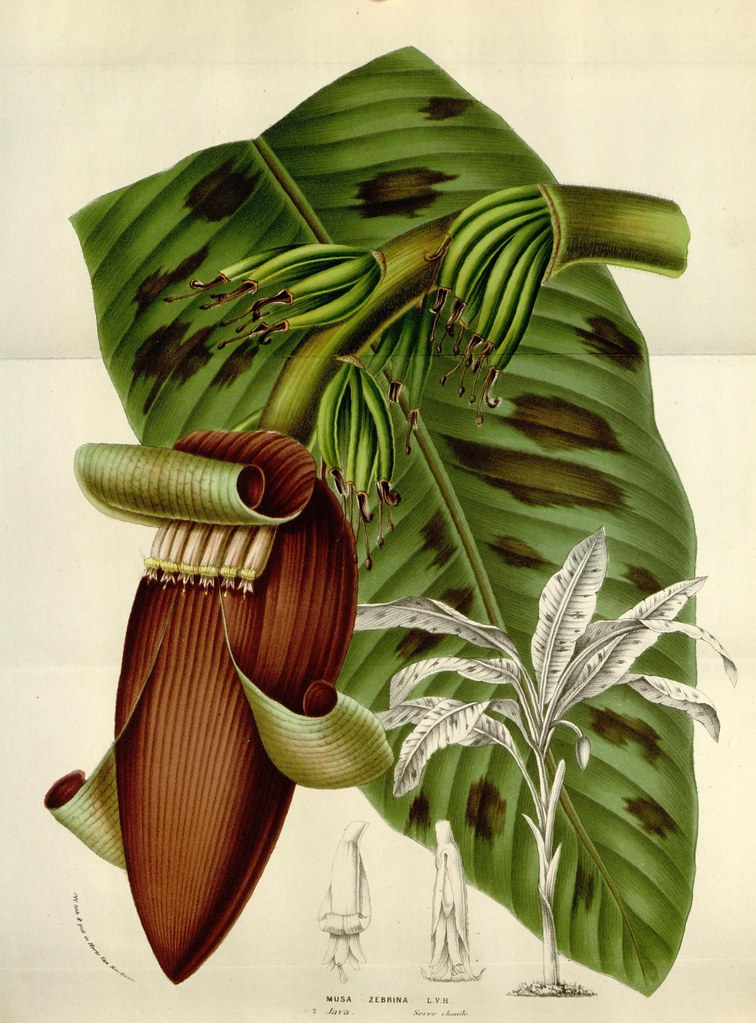#acuminata
Text


reed anatomy. he is theoretically a dog with the head and tail of a crocodile. and weird forelegs i guess
he has high neural spines/larger shoulders for the weight of his head, the ischium (sticky out pelvis thing that points towards tail) is elongated to anchor tail muscles, and his forelegs are sort of an amorphous mix of unguligrade and digitigrade anatomy. like he stands more upright and on his toes than a canine but not quite as stiffly as an equine or similar
2 notes
·
View notes
Photo

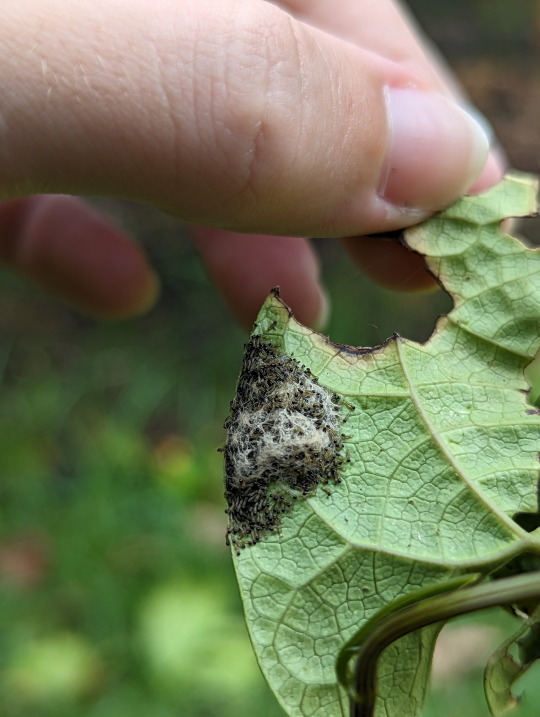
Baby Caterpillars
These are simple moth caterpillars, not the butterflies that this vine attracts.
Still very cute.
Specimens - Unidentified
Foodplant - Aristolochia acuminata
21/12/22
#lepidoptera#Lepidopterology#caterpillar#caterpillars#larvae#Larval stage#larva#Dutchman's Pipe#Aristolochia acuminata#Unidentified#bugs#bugblr#bug#bugs tw#insects#insecta#insect#insects tw#insectblr#entomology#Arthropods#Arthropoda
50 notes
·
View notes
Text


Banana Plant 'Musa Acuminata'
2 notes
·
View notes
Photo


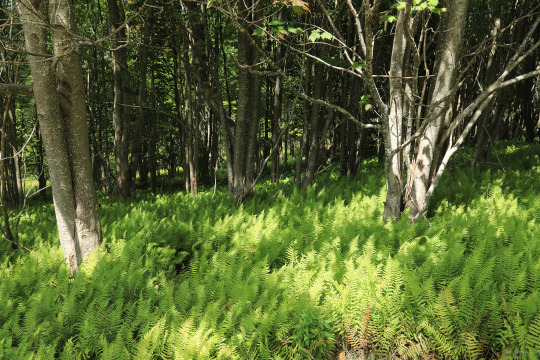



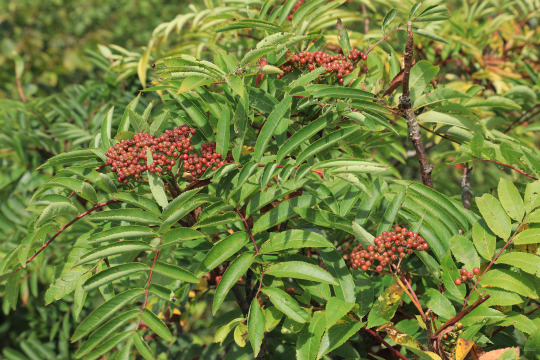
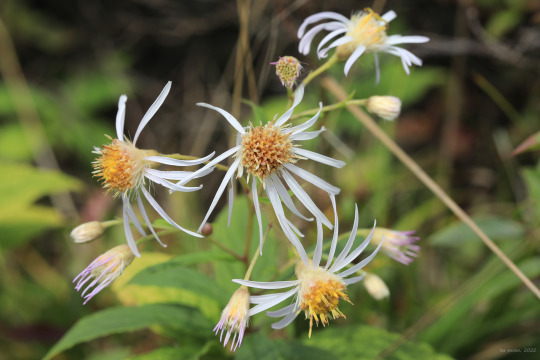


At an elevation of 4,308 ft (1,313 m) above sea level, Bald Knob is a commanding high point from which to view Canaan Valley and the undulating ridges of the Allegheny Mountains to the west. A hike to the summit, via Canaan Valley Resort State Park, can be either challenging or easy, depending on the mode of ascent. For those wanting to test their endurance and stamina, a trailhead adjacent to the ski area will gladly accommodate, with a 900 ft (274 m) vertical rise in about a mile of constant climbing. On the other hand, a visitor can opt for a $5 lift ticket at the ski area and hike essentially downhill from there. Either way, the reward is a breathtaking panorama of some of Central Appalachia's wildest country.
From top: the edible “haws” of one of the many hawthorn trees (Crataegus) that grow in these mountains, providing a valuable food source to wildlife; the bright, clustered berries of the American mountain ash (Sorbus americana), like hawthorn, a member of the Rosaceae family; whorled wood aster (Oclemena acuminata), a lovely mountain aster whose bunched, tightly-alternating leaves give the appearance of being whorled; and a Pholiota mushroom, most likely shaggy scalycap (squarrosa), growing in the hitch of a red spruce tree (Picea rubens).
#appalachia#vandalia#west virginia#allegheny mountains#canaan valley resort state park#bald knob#bald knob trail#canaan valley#crataegus#hawthorn#sorbus americana#american mountain ash#american mountain-ash#rowan#oclemena acuminata#whorled wood aster#pholiota squarrosa#shaggy scalycap#picea rubens#red spruce#i'll take the lift chair next time
44 notes
·
View notes
Text
Good Luck
You're stuck,
a plumeria with no more petals to pluck,
you've worn out all your luck.
However, even if your petals are strewn around,
with no one to care around,
remember your roots are safe in the ground.
After the hard rain,
through the clouded pain,
the sun will be yours again.
#poem#poetry#writerscreed#writingthestorm#poeticstories#hope#plumeria acuminata#useful and resilient#neat huh
32 notes
·
View notes
Text
Aelia acuminata (Bishop's Mitre) bug
youtube
8 notes
·
View notes
Photo
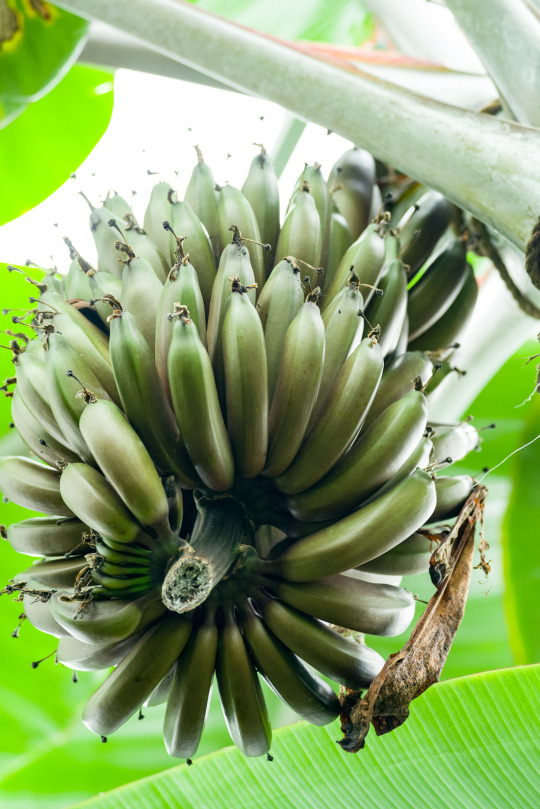
#musa acuminata cv. Morado#red banana#greenhouse#Shinjuku Gyoen National Park#Tokyo#アカバナナ#新宿御苑大温室#新宿御苑#東京#Voigtlander Macro APO-Lanther 125mm F2.5 SL
7 notes
·
View notes
Text
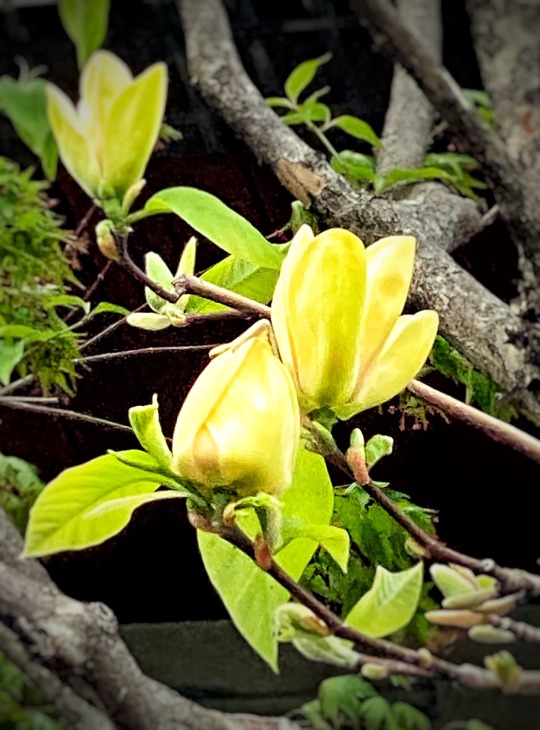
通勤途中でこの花を見るのも今年が見納めです。
「キモクレン(黄木蓮)」の花。
一般名:マグノリア・アクミナータ。
欧文名:Magnolia acuminata
3 notes
·
View notes
Text
You ever just wanna infodump about your ocs but dont have anything but the basics?
Yeah lets go
Lumia is the yellow mew, named after a species of lemon. Eximium is the red mewtwo, named after a species of chilli.
They're mates, established mates even, but also they're assholes so there's a bit of light bullying going on. They're fine, its their love language, a genuine fight between them looks much worse than the poking they do at each other, its just how they is.
They have kits on the way too, Eximium is carrying a litter of five. There'll be:
Persica (named after a peach species), an orange little grump
Boreale (named after a blueberry species), a chill little blue/purple baby
Charantia (named after the bitter melon), a little green genius
Integrifolia (named after a species of macadamia), a white little menace
And Acuminata (named after a species of kola), a little red/purple spitfire
It shouldn't be too hard to figure out, given their names, but their natures were heavily considered here and all the information needed has been given, if you wanna do a little research journey. A lot of Acuminata's personality can be figured out when you dive into their namesake
#chilli and lemons lumia#chilli and lemons eximium#chilli and lemons persica#chilli and lemons boreale#chilli and lemons charantia#chilli and lemons integifolia#chilli and lemons acuminata
0 notes
Text
Ocoee Bamboo Farm 407-777-4807
🌿 Standing tall and slender, the Mexican Weeping Bamboo boasts vibrant unique pine tree like leaves that sway gently in the breeze. 🌬️ Its delicate leaves elegantly drape down, creating a mesmerizing curtain of greenery. This beautiful plant adds a touch of serenity and tranquility to any outdoor space.
🌳 Beyond its visual appeal, Otatea acuminata is a versatile bamboo species. It thrives in various climates, making it suitable for a wide range of gardening conditions. Whether you have a tropical paradise or a temperate garden, this resilient bamboo will flourish and bring life to your landscape.
🌱 Mexican Weeping Bamboo is an excellent choice for those seeking privacy or natural screening. As it grows, it forms a dense foliage barrier, providing a sense of seclusion and creating an oasis within your own backyard. 🌿✨
🌾 Furthermore, this bamboo variety is known for its low maintenance requirements. With moderate watering and occasional pruning to maintain its shape, Otatea acuminata will reward you with its stunning presence year after year.
🏡 Whether you're looking to enhance your garden, create a serene outdoor retreat, or add a touch of exotic beauty to your landscape, the Mexican Weeping Bamboo is the perfect choice. 🌿🌺 Embrace the elegance and tranquility it brings, and watch your garden transform into a sanctuary of natural splendor.
🎋 Bring the enchanting allure of the Mexican Weeping Bamboo into your garden today! 🌿✨ #MexicanWeepingBamboo #OtateaAcuminata #GardenBeaut
#mexicanbamboo#mexicanweeping#mexicanweepingbamboo#Otateaacuminata#Otatea acuminata#rarebamboo#clumpingbamboo#collectorbamboo#bamboocollector#mexican
0 notes
Text

If you looked in one of her ears you would be able to see straight out the other side
2 notes
·
View notes
Video
n312_w1150 by Biodiversity Heritage Library
Via Flickr:
Flore des serres et des jardins de l'Europe A Gand :chez Louis van Houtte, eÌditeur,1845-1880. biodiversitylibrary.org/page/27758983
#Missouri Botanical Garden#Peter H. Raven Library#bhl:page=27758983#dc:identifier=https://biodiversitylibrary.org/page/27758983#flickr#musa zebrina#Blood banana#Musa acuminata var. zebrina#red banana tree#stripe-leaved banana#botanical illustration#scientific illustration
0 notes
Photo

A new variant has been added!
Sharp-tailed Sandpiper (Calidris acuminata)
© Unknown
It hatches from bright, brown, coastal, distinct, drab, dull, greenish, migrant, new, other, pacific, plain, rare, regular, rich, sharp, similar, soft, variable, and white eggs.
squawkoverflow - the ultimate bird collecting game
🥚 hatch ❤️ collect 🤝 connect
0 notes
Text
Monstera Punctulata Modern
Buy Monstera Punctulata For Sale
Monstera punctulata (Monstera deliciosa) is a tropical rainforest plant native to southern Mexico and south Panama. It has been introduced to many tropical places, becoming a somewhat invasive species in Hawaii and Seychelles. The particular epithet comes from the Latin pungens, which means “pointed.”
This well-established plant comes in a 4.5″ nursery container with drainage. Monstera punctulata (also known as the fiddle leaf fig or Swiss cheese plant) is an attractive evergreen native to Central and South American tropical forests, making it ideal for a warm, humid environment inside your home.
Monstera plants are low-maintenance and easy to care for, and they can make a dramatic accent to any room. Prefers direct sunlight to partial shade. Depending on the conditions, water once every 7-10 days. Before watering again, make sure the soil has dried out. Fertilize your houseplants on a regular basis with a specific houseplant fertilizer, about once every 6 weeks during the warmer months when the plant is actively growing.
Monstera punctulata, sometimes known as Monstera, is a plant in the Araceae family. It’s called Monstera punctulata variegata and has a different appearance from other Monstera kinds.
It has white variegations on its leaves (this variety has some green on the leaves too). The white color is caused by a lack of chlorophyll in particular places, making for an eye-catching variant of this popular houseplant.
Monstera punctulata is an evergreen shrub with dark green foliage. Its enormous, oval-shaped leaves are densely overlapping and reach a width of 3 feet. Although it grows quickly in optimal conditions, it is also incredibly adaptable, making it simple to care for in homes or businesses. This lovely plant can grow up to 10 feet tall and would look lovely in any indoor space.
Essential Tools for Monstera Punctulata Plant Care
Houseplant potting soil
Peat and aeration stones
Water probe or moisture meter
Protective gardening gloves
Pruning shears
Watering can
Spray bottle
Drip tray
Well-draining container
All-purpose, balanced houseplant fertilizer
The Monstera Punctulata is virtually an indoor tree; the plant may grow up to 20 feet in a pot, but its practical interior height is seven to nine feet. The Monstera Punctulata thrives in humidity and indirect sunshine, so if you have a south-facing window, you should be fine.
Keep the soil slightly damp when watering, as overwatering is one of the reasons why this plant dies quickly. It’s also simple to maintain; simply removing leaves from dead plants or applying leaf shine or wood polish restores its luster.
Monstera is one of the simplest tropical plants to cultivate indoors. It features a bamboo-like brown stem and tall, glossy leaves. A Monstera can sprout two leaves at a time and can grow to be 4′ long. The plant enjoys bright indirect light and will grow under fluorescent lights, but it can also be placed near a south-facing window that receives indirect sunlight for approximately 10 hours each day.
Too much spraying or misting of the leaves can cause the surface to develop black spots, which can grow if left untreated. Allow the soil to dry out between waterings when growing Monstera, but do not let it go fully dry.
#jenis jenis monstera#lifestyle#monstera#monstera acuminata#monstera adansonii#monstera borsigiana#monstera care#monstera deliciosa#monstera deliciosa variegata#monstera dubia#monstera dubia care#monstera laniata#monstera obliqua#monstera pinnatipartita#monstera propagation#monstera punctulata#monstera siltepecana#monstera species#monstera thai constellation#monstera varieties#rare monstera#real monstera obliqua#types of monstera plants
1 note
·
View note
Text
"In response to last year’s record-breaking heat due to El Niño and impacts from climate change, Indigenous Zenù farmers in Colombia are trying to revive the cultivation of traditional climate-resilient seeds and agroecology systems.
One traditional farming system combines farming with fishing: locals fish during the rainy season when water levels are high, and farm during the dry season on the fertile soils left by the receding water.
Locals and ecologists say conflicts over land with surrounding plantation owners, cattle ranchers and mines are also worsening the impacts of the climate crisis.
To protect their land, the Zenù reserve, which is today surrounded by monoculture plantations, was in 2005 declared the first Colombian territory free from GMOs.
...
In the Zenù reserve, issues with the weather, climate or soil are spread by word of mouth between farmers, or on La Positiva 103.0, a community agroecology radio station. And what’s been on every farmer’s mind is last year’s record-breaking heat and droughts. Both of these were charged by the twin impacts of climate change and a newly developing El Niño, a naturally occurring warmer period that last occurred here in 2016, say climate scientists.
Experts from Colombia’s Institute of Hydrology, Meteorology and Environmental Studies say the impacts of El Niño will be felt in Colombia until April 2024, adding to farmers’ concerns. Other scientists forecast June to August may be even hotter than 2023, and the next five years could be the hottest on record. On Jan. 24, President Gustavo Petro said he will declare wildfires a natural disaster, following an increase in forest fires that scientists attribute to the effects of El Niño.
In the face of these changes, Zenù farmers are trying to revive traditional agricultural practices like ancestral seed conservation and a unique agroecology system.
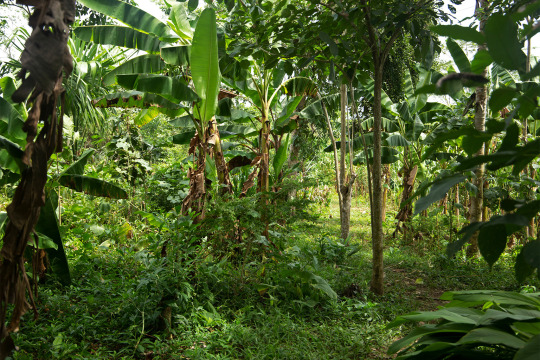
Pictured: Remberto Gil’s house is surrounded by an agroforestry system where turkeys and other animals graze under fruit trees such as maracuyá (Passiflora edulis), papaya (Carica papaya) and banana (Musa acuminata colla). Medicinal herbs like toronjil (Melissa officinalis) and tres bolas (Leonotis nepetifolia), and bushes like ají (Capsicum baccatum), yam and frijol diablito (beans) are part of the undergrowth. Image by Monica Pelliccia for Mongabay.
“Climate change is scary due to the possibility of food scarcity,” says Rodrigo Hernandez, a local authority with the Santa Isabel community. “Our ancestral seeds offer a solution as more resistant to climate change.”
Based on their experience, farmers say their ancestral seed varieties are more resistant to high temperatures compared to the imported varieties and cultivars they currently use. These ancestral varieties have adapted to the region’s ecosystem and require less water, they tell Mongabay. According to a report by local organization Grupo Semillas and development foundation SWISSAID, indigenous corn varieties like blaquito are more resistant to the heat, cariaco tolerates drought easily, and negrito is very resistant to high temperatures.
The Zenù diet still incorporates the traditional diversity of seeds, plant varieties and animals they consume, though they too are threatened by climate change: from fish recipes made from bocachico (Prochilodus magdalenae), and reptiles like the babilla or spectacled caiman (Caiman crocodilus), to different corn varieties to prepare arepas (cornmeal cakes), liquor, cheeses and soups.
“The most important challenge we have now is to save ancient species and involve new generations in ancestral practice,” says Sonia Rocha Marquez, a professor of social sciences at Sinù University in the city of Montería.
...[Despite] land scarcity, Negrete says communities are developing important projects to protect their traditional food systems. Farmers and seed custodians, like Gil, are working with the Association of Organic Agriculture and Livestock Producers (ASPROAL) and their Communitarian Seed House (Casa Comunitaria de Semillas Criollas y Nativas)...
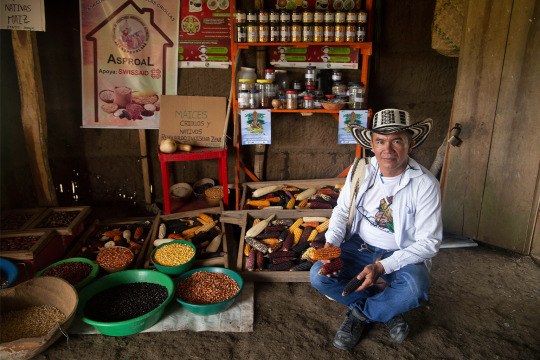
Pictured: Remberto Gil is a seed guardian and farmer who works at the Communitarian Seed House, where the ASPROL association stores 32 seeds of rare or almost extinct species. Image by Monica Pelliccia for Mongabay.
Located near Gil’s house, the seed bank hosts a rainbow of 12 corn varieties, from glistening black to blue to light pink to purple and even white. There are also jars of seeds for local varieties of beans, eggplants, pumpkins and aromatic herbs, some stored in refrigerators. All are ancient varieties shared between local families.
Outside the seed bank is a terrace where chickens and turkeys graze under an agroforestry system for farmers to emulate: local varieties of passion fruit, papaya and banana trees grow above bushes of ají peppers and beans. Traditional medicinal herbs like toronjil or lemon balm (Melissa officinalis) form part of the undergrowth.
Today, 25 families are involved in sharing, storing and commercializing the seeds of 32 rare or almost-extinct varieties.
“When I was a kid, my father brought me to the farm to participate in recovering the land,” says Nilvadys Arrieta, 56, a farmer member of ASPROAL. “Now, I still act with the same collective thinking that moves what we are doing.”
“Working together helps us to save, share more seeds, and sell at fair price [while] avoiding intermediaries and increasing families’ incomes,” Gil says. “Last year, we sold 8 million seeds to organic restaurants in Bogotà and Medellín.”
So far, the 80% of the farmers families living in the Zenù reserve participate in both the agroecology and seed revival projects, he adds."
-via Mongabay, February 6, 2024
#indigenous#ecology#agroforestry#agriculture#traditional food systems#traditional medicine#sustainable agriculture#zenu#indigenous peoples#farming#colombia#indigenous land#traditional knowledge#seeds#corn#sustainability#botany#plant biology#good news#hope#climate action#climate change#climate resilience#agroecology#food sovereignty
1K notes
·
View notes
Text
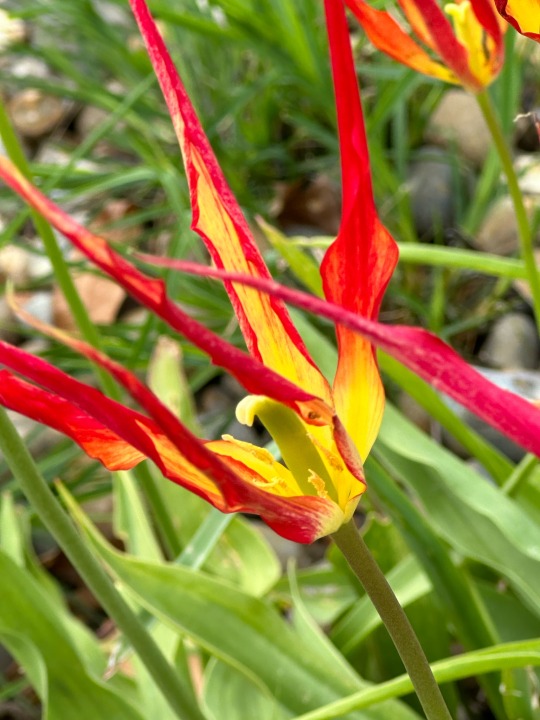


Plant of the Day
Monday 22 April 2024
The delicate flowers of Tulipa acuminata (species tulip, horned tulip) mean the bulbs need careful placement to ensure that their display is not overpowered by the surrounding planting.
Jill Raggett
#Tulipa#tulip#tulips#species tulip#horned tulip#plants#horticulture#gardens#garden#essex#dry garden#RHS Hyde Hall#red flowers
138 notes
·
View notes
